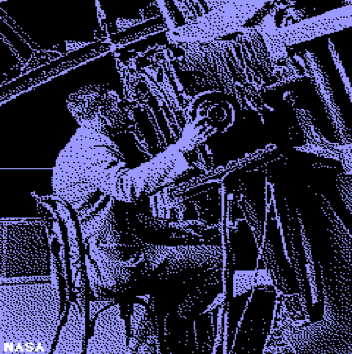Human Intelligence published October 2005 in the Riverside Review
During the past 100 years, astronomers have discovered quasars, pulsars, black holes and planets orbiting distant suns. But all these pale next to the discoveries Edwin Hubble made in a few remarkable years in the 1920s. At the time, most of his colleagues believed the Milky Way galaxy, a swirling collection of stars a few hundred thousand light-years across made up the entire cosmos. But peering deep into space from the chilly summit of Mount Wilson, in southern California, Hubble realized that the Milky Way is just one of millions of galaxies that dot the incomparably larger setting.

Hubble went on to trump even that achievement by showing that this galaxy-studded cosmos is expanding – inflating majestically like an unimaginable gigantic balloon – a find that prompted Albert Einstein to thank Hubble for making this discovery. It seems that the great physicist’s theory of relativity showed the universe was either expanding or contracting, yet other astronomers had told him it was doing neither. Against his better judgment, Einstein uglied up his original equation with extra factors to keep the universe from collapsing. Einstein was elated with Hubble’s discovery for it proved his original theory of relativity was correct and the extra factors unnecessary.
Hubble’s observations showed that the farther away the galaxy, the faster it receded. This relation of speed and distance became known as Hubble’s Law. It was proof that we are living in an expanding universe, and it laid the foundation for the Big- Bang theory of the universe’s origin. Through Edwin Hubble’s intellect the cosmos was discovered, and so the science of cosmology (study of the universe) was founded.
Hubble’s astronomical triumphs earned him worldwide scientific honors. Yet nobody could have imagined such a future for the University of Chicago law school undergraduate that went on to earned a Rhodes scholarship to Oxford. During World War I he earned the rank of Major. In 1919 while still in his uniform, the 30-year Major showed up at the Mount Wilson Observatory to start his career as astronomer peering into the 100-inch Hooker Telescope, the most powerful on earth at that time. His public reputation was cemented with the 1936 publication of his discoveries, The Realm of the Nebulae. His greatest contribution to astronomy was Hubble’s central role in the design and construction of the Hale Telescope on Palomar Mountain. Four times as powerful as the Hooker, the Hale would be the largest telescope on Earth for four decades. Construction was delayed by WWII, but Hubble finally got his hands on the Hale when it went into service in 1949. It was too late; he had suffered a major heart attack, and he never fully regained the stamina it took to spend all night in a freezing-cold observatory.
The only recognition that eluded Hubble was a Nobel Prize. Insiders say that he was on the verge of winning when he died in 1953. He would have been consoled by the fact that his name now adorns the Hubble Space Telescope, which probes the depths of the cosmos beyond even his imagination. On April 25, 2005 the Hubble Space Telescope celebrated its 15th anniversary in orbit. Today this space telescope is 10 times shaper than any previous telescope and has compiled a long list of scientific achievements. The Hubble telescope has helped astronomers calculate the precise age of our universe at 13.7 billion years or 9 billion years older than our earth.
(Taken partly from the March 29, 1999 Time Magazine article by Michael D. Lemonick, senior writer.)
